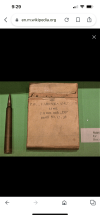Great discussion!
Since the barrel erosion is in the throat instead of the muzzle and we assume that most of the powder is burned by the time the bullet gets to the muzzle and is where the bullet is going the fastest then we can assume that powder burn instead of speed is the cause of throat erosion.
There is a lot of energy transfer in a very short time span and space. I see evidence of direct impingement of fire and heat in burned out throats. I do not see evidence of powder erosion by friction in the throat and I do not buy the theory that the powder is wearing the barrel by abrasion. The powder is not a abrasive and most is coated with a lubricant such as graphite. A barrel gets hottest at the chamber end where the bullet is going it slowest not at the muzzle where the bullet is going its fastest. Which leads me to the conclusion that heat from powder burn and not heat from friction is the cause of burned out throats.
So to answer the question I think the type of powder and how it impinges on the throat impacts throat erosion more than bullet weight.
Since the barrel erosion is in the throat instead of the muzzle and we assume that most of the powder is burned by the time the bullet gets to the muzzle and is where the bullet is going the fastest then we can assume that powder burn instead of speed is the cause of throat erosion.
There is a lot of energy transfer in a very short time span and space. I see evidence of direct impingement of fire and heat in burned out throats. I do not see evidence of powder erosion by friction in the throat and I do not buy the theory that the powder is wearing the barrel by abrasion. The powder is not a abrasive and most is coated with a lubricant such as graphite. A barrel gets hottest at the chamber end where the bullet is going it slowest not at the muzzle where the bullet is going its fastest. Which leads me to the conclusion that heat from powder burn and not heat from friction is the cause of burned out throats.
So to answer the question I think the type of powder and how it impinges on the throat impacts throat erosion more than bullet weight.


